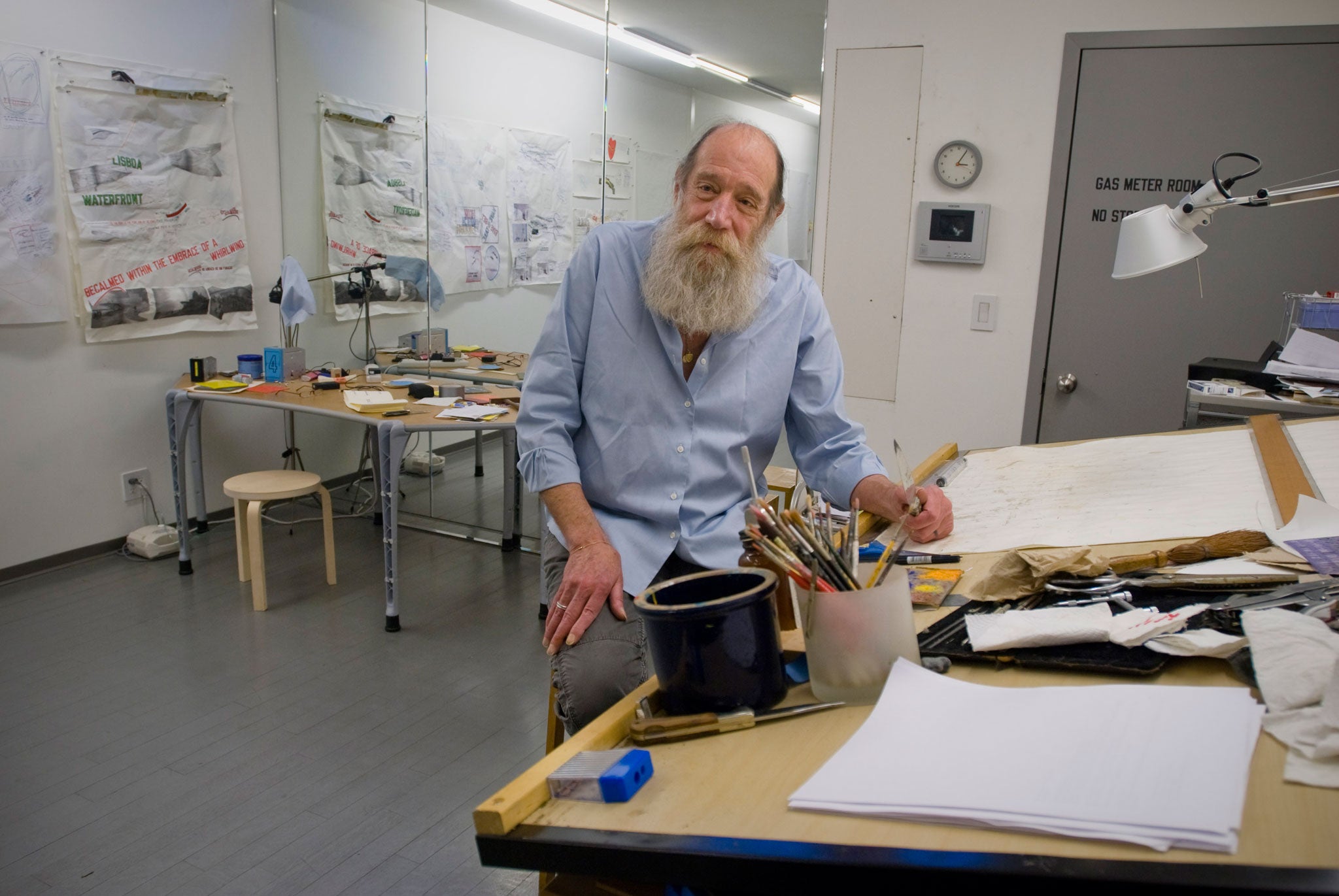In the studio: Lawrence Weiner, artist
'Art, if it really and truly succeeds, is going to change other people's lives'

Lawrence Weiner works in his studio in a mixed-usage building that he built with his wife, Alice, in the West Village in New York City. Imploding the small house they had lived in for 25 years, they built on the existing site with the advice of local architects LOTEK and "Alice as engineer". The resulting commodious five-storey structure will ultimately sport a green growing roof and solar panels, as well as living, archive and working spaces.
I am invited on a bottom-to-top tour, during which we pass from the basement studio where we have been chatting up into the archive room. The studio itself is bright, opening into a small garden. There is an "ideas wall" on which are displayed projects from Lisbon to Paris in progress, near a desk with well used pencils, water-colours and stencils.
Weiner was born in the Bronx in 1942. His unhappy childhood has been widely chronicled and re-chronicled. He may be tired today but his distinctive look and his full and carefully groomed beard mean he is instinctively recognizable.
Weiner has often been called a conceptual artist but he dismisses this immediately. What he is clear on is that when he started to show work in the 1960s it was accepted by his peers. "I was supportive of certain people who like to call themselves Conceptual. I was in the first Art & Language book."
Weiner's core work ultimately relies on text – both through a flow of books and wall "sculptures", as he calls them, of slogans installed in a distinctive and legible fashion. He uses language as a way of opening up discourse. "But language allows it to go from culture to culture without becoming exotic."
Weiner is clear that it is not the materials that an artist uses but what they do with them that is important. "Every day that you make a work of art, which gives dignity to stone, which somebody can relate to that stone, then people can relate better to another person".
It is not about überpolitics but the inter-relational that Weiner talks about: "Watch people who have really found something in art, and you watch how that really tempers how they deal with their life. That's what art does: it lets you have this conversation."
Weiner's forthcoming projects include a mixture of public and private spaces. He has been given the task of trying to unite through art the original Eero Saarinen building with the more recent Calatrava wing of the Milwaukee Museum of Art. In the meantime, he is working on more publications, many of them done on a "pro bono basis" to raise the profile of locations – such as Palestine that he feels are important.
He is modest, admitting the possibility of failure. "Art, if it really and truly succeeds, is going to change other people's lives. If it doesn't succeed, then, well… well you did the best you could. And that's all you can say as an artist".
Subscribe to Independent Premium to bookmark this article
Want to bookmark your favourite articles and stories to read or reference later? Start your Independent Premium subscription today.

Join our commenting forum
Join thought-provoking conversations, follow other Independent readers and see their replies